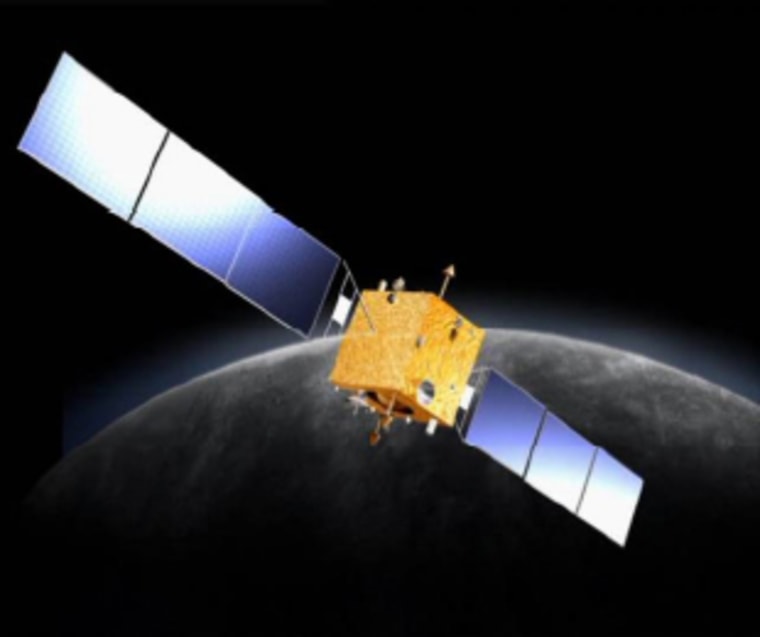China is planning to launch a second spacecraft to explore the moon even as its first lunar orbiter continues to map the lunar surface, the country's state-run media has reported.
The new probe, Chang'e 2, is slated to launch sometime in 2009, according to reports by the Xinhua News Agency and China Central Television. Ye Peijian, lead designer and commander of China's Chang'e 1 lunar orbiter currently circling the moon, announced plans for the second mission, but provided little additional details, Xinhua reported.
Chang'e 1 is a 5,180-pound (2,350-kg) satellite that launched Oct. 24 from China's Xichang Satellite Launch Center in the southwest Sichuan Province to spend about one year mapping and studying the moon. The spacecraft is based on China's Dongfanghong 3 telecommunication satellite platform and equipped with eight primary instruments, though Ye did not state whether its Chang'e 2 successor would be based on a similar design.
But the success of Chang'e 1 to date, especially its survival of a Feb. 20 eclipse that starved its power-generating solar panels of sunlight, has been under discussion, according to a series of reports by Xinhua and other outlets.
"Chang'e 1 passed the test," Xinhua quoted Ye as saying after last month's total lunar eclipse. The eclipse forced the lunar orbiter to consume about 40 percent of its overall battery power, less than the 60 percent expected before the eclipse, and left it out of contact with flight controllers in Beijing for about 49 minutes, Xinhua reported.
Slideshow 12 photos
Month in Space: January 2014
The eclipse left the lunar probe without direct sunlight for about 80 minutes, though it did fire its rocket engine to tweak its orbital path to minimize the time in shadow, Gu Shen, deputy director of Chang'e 1's measurement and control systems, told Xinhua.
On Feb. 21, Chang'e 1 beamed home its complement of 30 songs as part of China's Lantern Festival celebration to mark the end of the country's Lunar New Year festivities, Xinhua reported.
China's Chang'e 1 spaceflight is part of a three-stage plan to explore the moon with orbiting spacecraft, rovers and ultimately a sample return mission.
The China National Space Administration is also preparing to launch the nation's third manned mission, Shenzhou 7, later this year. China is only the third country after Russia and the U.S. to launch astronauts into orbit. The country's first astronaut, Yang Liwei, launched into orbit in 2003 during the Shenzhou 5 mission, with a two-astronaut crew following aboard Shenzhou 6 in 2005.
Shenzhou 7 is expected to launch three astronauts into space and feature China's first spacewalk. Hardware tests of the mission's airlock and spacesuits have met with success, according to past Xinhua reports.

